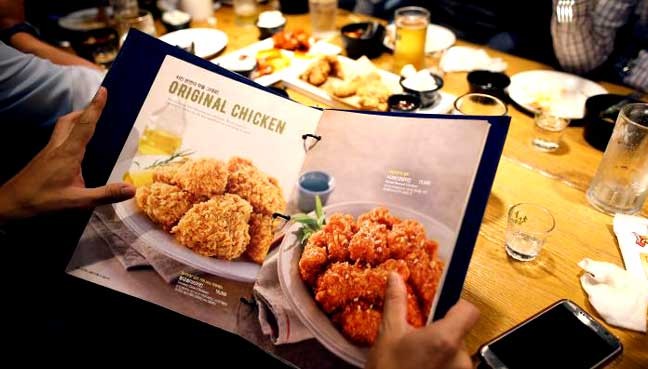(VOVWORLD) - Imagine the sound of crispy fried chicken being torn apart, followed by the refreshing clink of beer glasses. This mouthwatering scene is part of Korean life. It celebrates flavors, friendships, and tradition, and it’s called Chimaek culture.
 Chimaek, a common slang word combining the "chi" from "chikin" and the "maek" from "maekju", the Korean word for beer. (Photo: Wikimedia Commons) Chimaek, a common slang word combining the "chi" from "chikin" and the "maek" from "maekju", the Korean word for beer. (Photo: Wikimedia Commons) |
Chimaek, the Korean food combo of fried chicken and beer, has become a beloved icon of Korean culinary culture. What make a perfect Chimaek combo and how should it taste? Korean native Lee Jin Baek will help us figure it out.
“Good Chimek has to have crispy, well-seasoned chicken and ice-cold beer. And the texture really matters. It has to be crunchy on the outside but juicy inside. A good dipping sauce helps, too.”
Chimaek’s popularity is partly due to the variety of flavors it offers. For Chimaek, fried chicken is never just plain fried chicken - there’s something for every palate. Classic versions include yangnyeom chicken - a simple crispy chicken - that allows the fried coating to shine.
Restaurants across Korea have experimented with different marinades, spices, and cooking methods to create their own signature Chimaek dishes. Some offer garlic-soy glazed chicken, while others serve up spicy options that challenge even the bravest of hot sauce lovers.
“For me, the favorite is honey butter. Honey butter is like eating butter and honey at the same time, but we have a unique kind called Andong spice chicken, which has a different kick and is well worth trying.” Jin said.
 From an expensive treat during the post-war period, Chimaek is now available on most South Korean restaurants' menu. (Photo: www.freemalaysiatoday.com) From an expensive treat during the post-war period, Chimaek is now available on most South Korean restaurants' menu. (Photo: www.freemalaysiatoday.com) |
Chimaek’s rise to stardom in Korean culture began in the post-Korean War era when American troops stationed in South Korea introduced fried chicken. At first, chicken was an expensive treat for Koreans, but in the 1970s, it became more affordable as fried chicken chains emerged.
The trend of pairing fried chicken with beer began in the 1990s as a more relaxed drinking culture arose. The pairing, while simple, felt revolutionary. What was once a humble meal quickly became a nationwide favorite.
Chimaek is often served at gatherings of friends or co-workers after a long day. That’s why the rise of Chimaek contributed to a boom in Korea’s service sector. But it can also be a private meal eaten at home.
“Chimaek is one of the reasons delivery culture is so big in Korea. It’s easy, and people love the convenience of getting Chimaek delivered right to their door. It's especially made for delivery and keeps the industry strong,” said Jin.
The 2013 drama “My Love from the Star” has a memorable scene in which the female lead enjoys Chimaek on a snowy night. An enthusiastic response from K-drama fans around the world added momentum to Chimaek’s long-developing trend.
“Definitely, with K-pop and K-drama making Chimaek popular globally, people are now able to find it in other countries, too. It’s interesting how something so local has become international,” Jin explained.
The annual Daegu Chimaek Festival that attracts more than 1 million participants underscores Chimaek’s growing global fanbase. Its endless servings of fried chicken and beer attract hordes of hungry people who come with their friends and family.
 The annual Daegu Chimaek Festival. (Photo: Korea Tourism Organization) The annual Daegu Chimaek Festival. (Photo: Korea Tourism Organization) |
“We’re traveling 300 km from Seoul to be here for one reason. That’s because Daegu is home to the Chimaek festival,” one tourist to South Korea said. Many others also shared:
“Daegu is famous for chicken, so I came here to enjoy chicken and beer. I plan to try all the different types and eat until my stomach explodes.”
“I came with my friend, my father's friend, and his family. The Chimaek is delicious, the atmosphere is fun, and I really like it. I’ll definitely come again next year.”
Korean cuisine is a cultural export that connects with people from all walks of life. Just as sushi symbolizes Japan and pizza evokes Italy, Chimaek now represents Korea.